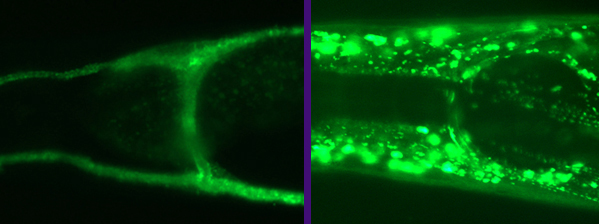 |
WELCOME
A
Genetic study of
Neuronal Signaling, Glutamate
Accumulation,
and
Stroke-Like
Neuro-degeneration in C. elegans
Our
brain is buzzing with neuronal activity. Nerve cells relentlessly fire
information at one another, releasing powerful stimulating molecules in
the process, such as the neurotransmitter Glutamate. How do we keep
order in this mayhem? How do we clear the synapse of Glutamate, and
prevent it from spilling over between neuronal circuits? Glutamate is
also a dangerous neurotransmitter, because its accumulation in the
synapse is toxic to the surrounding neurons. Indeed, insufficient
Glutamate clearance during stroke/brain ischemia causes
neurodegeneration in a process called excitotoxicity. What are the
pathological events that happen in excitotoxicity? Can we find ways to
stop or slow-down the degenerative process once it started?
These are some of the questions that we study in our lab. To help us
tackle these complicated topics, we use the microscopic, free-living
nematode C. elegans. Although
these worms look very different from humans, they provide an excellent
animal model system, because cellular and molecular events are highly
conserved in evolution and are very similar in nematodes and humans. C. elegans
research offers a simplified core version of these conserved signaling
cascades, and a set of very powerful research tools. Since these
nematodes are transparent, we can use optogenetics to study neuronal
activity in intact animals while we modify their ability to clear
Glutamate from their synapses. We can use genetic analysis and a
battery of readily available mutant strains to follow the process of
excitotoxic neurodegeneration, and determine critical steps.
Furthermore, we can examine the balance between these neurodegenerative
processes and pro-survival signaling cascades that provide
neuroprotection. The use of C. elegans
therefore allows us to illuminate basic principles in neuronal
neurophysiology, neurodegeneration, and neuroprotection, principles
that could provide guidance in the understanding of similar processes
in higher animals.
more
|
 |




 Physiol.
Pharm. & Neurosci,
City College, C.
elegans @ CUNY
Physiol.
Pharm. & Neurosci,
City College, C.
elegans @ CUNY

